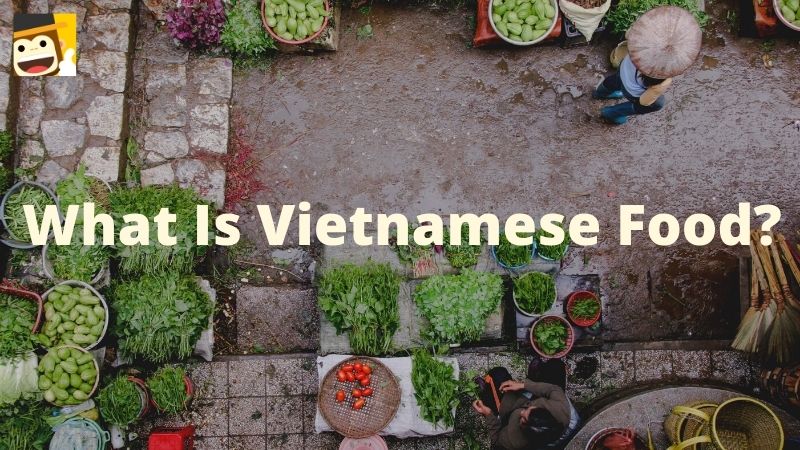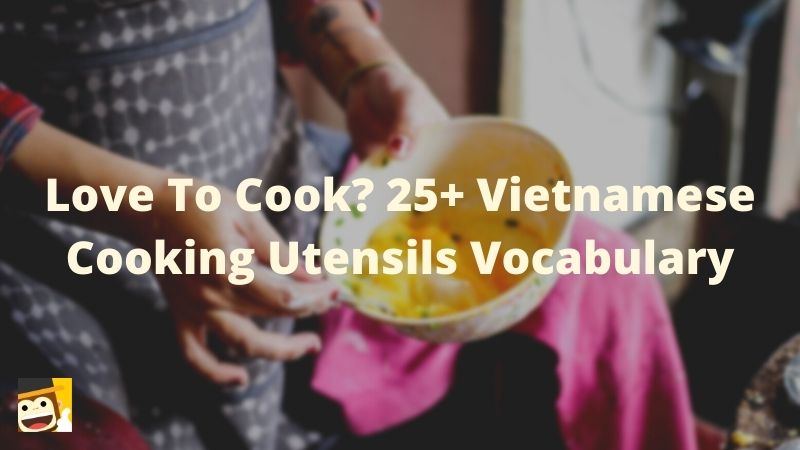Have you ever traveled to Vietnam and woken up to the smell of something so delicious that you thought it was a dream? Then, the next thing you know, you’re sitting down at the restaurant in awe of the taste and flavors? At that time, you were probably wondering about Vietnamese cooking utensils vocabulary!
I’m sure anyone who has traveled to Vietnam or eaten Vietnamese food, in general, can agree that Vietnamese food is unique. When something is that unique, it often makes us wonder what are the ingredients and what technique did that cook use?
Whether your passion is cooking, traveling, or both, it’s time to learn Vietnamese and 25+ Vietnamese cooking utensils vocabulary! That way, you’re prepared the next time you come across Vietnamese food, and you want to know what kinds of cooking utensils and ingredients the cook is using!
Before we jump into the Vietnamese cooking utensils vocabulary, let’s talk briefly about the country of Vietnam and, of course, Vietnamese food.
Where Is Vietnam?

It’s always good to know some facts about the country whose food you’re eating. We’ve listed some of the most important facts about Vietnam to make it easy. Enjoy!
- Location: Southeast Asia
- Capital: Hanoi
- Population: Approximately 96 million
- Official Language: Vietnamese
- Religion: 86% Vietnamese folk/No specific religion, 5% Buddhist, 6% Catholicism, 3% Other
- Size: Approximately 311,699 square kilometers
- Bordering Countries: China, Laos, CambodiaNow that you have some basic knowledge of Vietnam, we can go on to talk about the food! If you’re interested to learn more about Vietnam, there are plenty of great resources available!
What Is Vietnamese Food?

Before you start learning Vietnamese cooking utensils vocabulary, you should also know a bit about Vietnamese food and, as a bonus, how to call some of the ingredients in Vietnamese!
What Are The Main Ingredients In Vietnamese Food?
Now, we’re here to share with you some of the main ingredients in Vietnamese food.
We’ve included the English word, Vietnamese word, and a pronunciation button for your convenience. Listening to the correct pronunciation and practicing it should help you develop the confidence to talk with people!
While there are more ingredients to Vietnamese cooking, this is just a basic list to get you started! After learning these terms, we hope that next time you go to eat Vietnamese food or you go to the store to buy the ingredients, you can speak to Vietnamese people!
What Are Some Popular Vietnamese Dishes?
Now that you know about some of the main ingredients used in Vietnamese food, you should know about popular Vietnamese dishes!
Feel free to practice even more by learning about and practicing to speak the ingredients in each dish! Have fun!
25+ Vietnamese Cooking Utensils Vocabulary
Since you’ve had the chance to learn about Vietnam, some of the ingredients used in Asian food, and popular Vietnamese dishes, it’s finally time to learn 25+ Vietnamese cooking utensils vocabulary!
Kitchen Utensils Vietnamese Vocabulary
Here are some common words for kitchen utensils in Vietnamese!
| English | Vietnamese | Pronunciation |
| Chopsticks | đũa | |
| Fork | cái nĩa | |
| Spoon | cái thìa | |
| Knife | dao | |
| Plate | đĩa ăn | |
| Bowl | bát | |
| Cup/Cups | cốc | |
| Napkin | khăn ăn | |
| Spatula | cái thìa | |
| Scissors | cây kéo |
Let’s move on to the Vietnamese vocabulary for kitchen appliances.
Kitchen Appliances Vietnamese Vocabulary
Learning about the smaller kitchen utensils is important, but it’s just as important to learn about the bigger kitchen equipment needed to cook!
Hopefully, you’ve learned enough about Vietnamese cooking utensils to be able to spot and name them whenever you see them next!
It’s important to know the vocab, but remember to keep practicing, especially with other people! With a tonal language like Vietnamese, we recommend practicing every day, even if it’s just for 10 minutes. Luckily, we have a great app recommendation to help you remember the vocabulary and practice!
Keep Learning With The Ling App!

If you want to continue learning Vietnamese, you should use the Ling Language Learning App!
Ling offers unbeatable features, including unique voice recordings from native speakers, a chatbot to interact with, helpful vocabulary, daily lessons, fun quizzes, and even more advanced learning material. This app is truly for everyone, whether you’re a beginner or an advanced learner! The app runs smoothly, is easy to navigate, and is available both in the App Store and on Google Play.
We hope you’ll enjoy Ling as much as we do! Also, check this out if you’re curious about anything else Vietnamese-related!










































